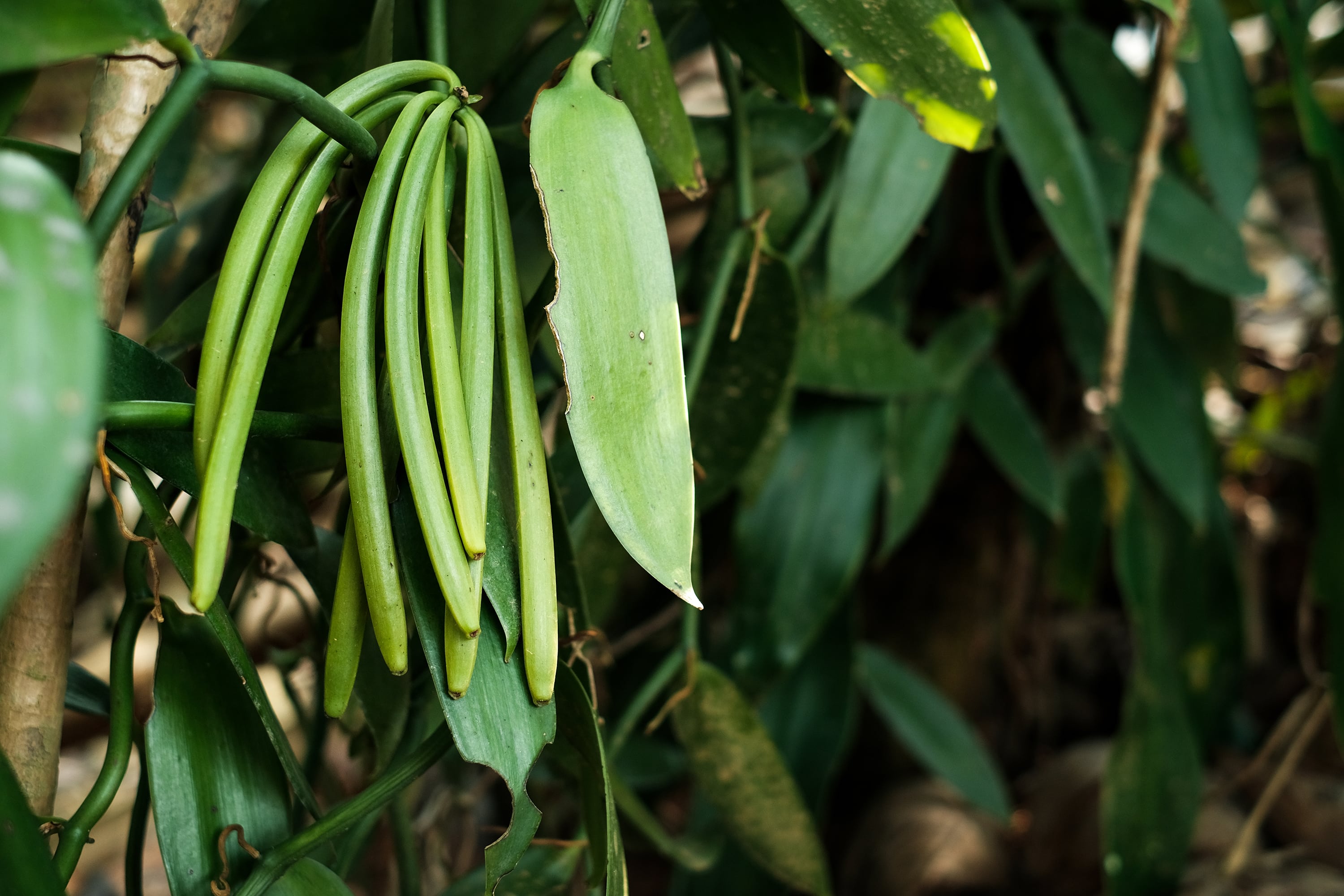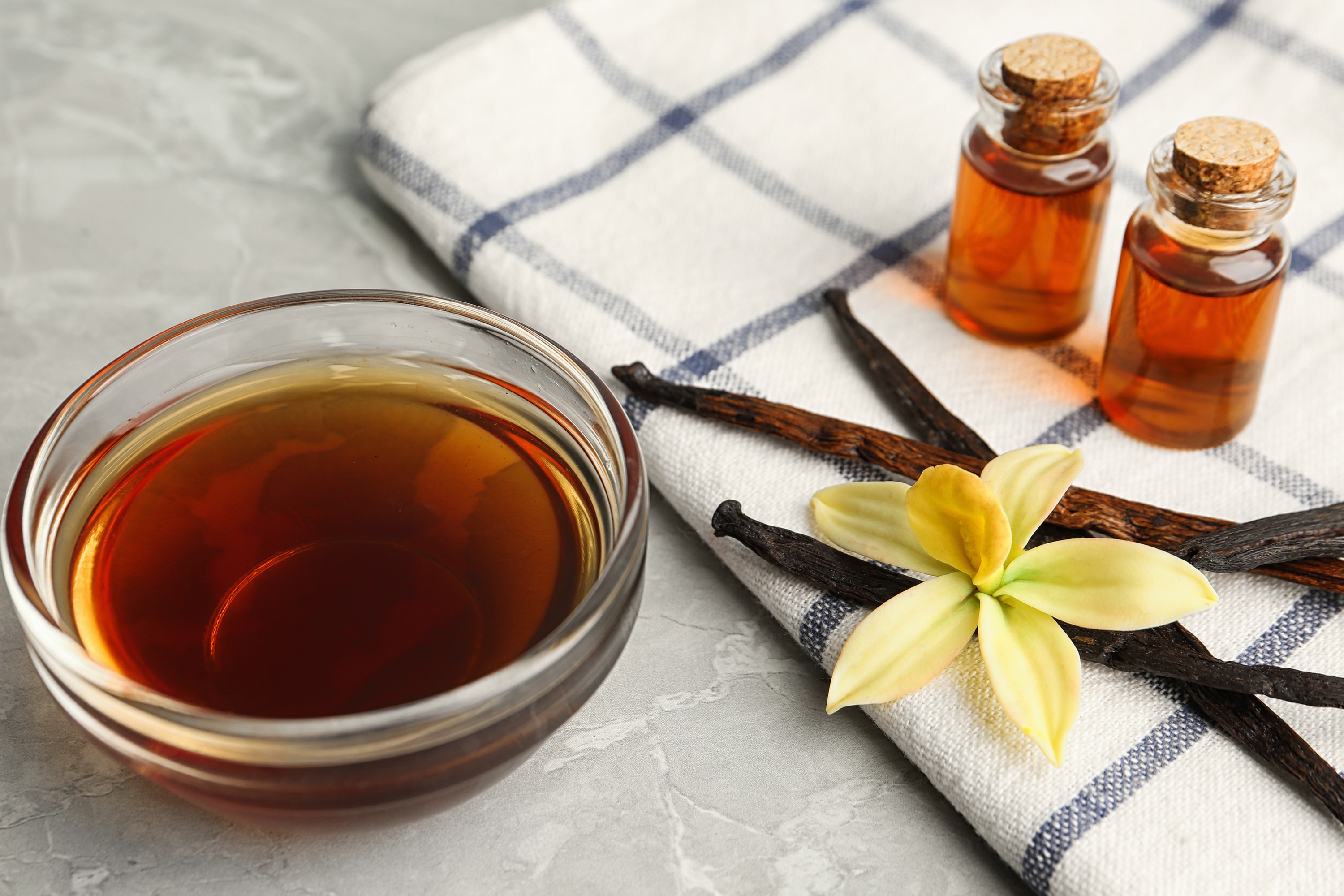All about Vanilla: The World's Most Versatile Spice
Written by Charlie Sprague April 27, 2023Vanilla is one of the most popular flavors on Earth, and for good reason. Found in very select locations around the world, vanilla is highly sought after for its sweet, aromatic flavor and unique scent, which adds a depth of richness to baked goods, beverages, and desserts. But what makes vanilla such a unique ingredient? Where and how is it grown, and how can you find the best vanilla to fit your next recipe?
How is vanilla grown and harvested?
Vanilla is a tropical orchid that grows as a vine, clinging to trees or other supporting structures. This orchid requires a very specific climate and soil to grow, thriving only in warm, humid climates with well-drained soil. In the right conditions, it takes around three years for a vanilla vine to mature. Once mature, vanilla plants will produce small, yellow-green flowers that must be painstakingly hand-pollinated in order to produce vanilla beans.
The process of harvesting the vanilla bean pods is labor-intensive and requires great attention to detail. The pods must be hand-picked at just the right time to ensure they are at the peak of ripeness, but not yet overripe. If they’re picked too early, they won’t have developed the complex flavor and aroma that we associate with vanilla. If they’re picked too late, they’ll start to split open and lose their taste.
Once harvested, the pods undergo a lengthy curing process to dry the beans and bring out their flavor. The curing process can take several months and involves alternating drying and sweating the beans.
What types of vanilla can be found around the world?
Madagascar Vanilla
Madagascar, or Bourbon vanilla is often considered the gold standard of vanilla. Grown on the island of Madagascar, off the east coast of Africa, this type of vanilla is known for its rich, creamy flavor and sweet, floral aroma. It has a high concentration of vanillin, the compound that gives vanilla its distinct flavor.
Tahitian Vanilla
Tahitian vanilla is grown primarily in French Polynesia, and is known for its fruity, floral flavor and aroma. It has a lower concentration of vanillin than Madagascar vanilla but is still highly prized for its delicate flavor.
Mexican Vanilla
Mexican vanilla is one of the oldest types of vanilla and is grown primarily in Veracruz and Chiapas. It has a woody, spicy flavor and aroma, with notes of cinnamon and clove. Mexican vanilla has a lower concentration of vanillin than other types of vanilla but is still a popular choice for baking and desserts.
Indonesian Vanilla
Indonesian vanilla is grown on the island of Java, and is known for its smoky, woody flavor and aroma. It has a high concentration of vanillin and is often used in the production of vanilla extract.
Ugandan Vanilla
Ugandan vanilla is grown in the African country of Uganda, and is known for its earthy, chocolatey flavor and aroma. It has a lower concentration of vanillin than other types of vanilla but is still highly prized for its unique flavor.
How is vanilla sold?
Following the curing process, vanilla can be packaged and purchased in a variety of ways. Vanilla beans, vanilla bean paste, and vanilla extract are three of the most common ways vanilla can be found on the shelf.
Vanilla Beans
Whole vanilla beans are the most flavorful and aromatic way to use vanilla. To use them, you need to split the pod open lengthwise and scrape out the tiny black seeds inside. These seeds are what gives vanilla its unique taste.
Vanilla beans are more expensive than other forms of vanilla, but their intense flavor and aroma are worth the investment. They're also highly versatile and can be used in a variety of recipes, such as ice cream, custards, and baked goods.
Vanilla Bean Paste
Vanilla bean paste is a thick and syrupy mixture made from vanilla beans, sugar, and water. It has the same flavor as vanilla beans but is easier to use since you don't need to scrape out the seeds. You can use it as a one-to-one substitute for vanilla extract in recipes, and it gives baked goods a lovely, speckled appearance.
Vanilla bean paste is ideal when you want a strong vanilla flavor, such as in custards, ice creams, and buttercream frosting. It's also excellent for recipes where you want the appealing little flecks of vanilla beans without the added cost.
Vanilla Extract
Vanilla extract is a liquid made by macerating vanilla beans in alcohol and water. It's the most commonly used form of vanilla and is readily available at most grocery stores. Vanilla extract has a less intense flavor than vanilla beans or paste, but it's still an excellent option for recipes where you want a more subtle vanilla flavor.
Vanilla extract is great for recipes where you don't want the speckled appearance of vanilla beans, such as in white cakes or frosting. It's also ideal for recipes where you want to add vanilla flavor without altering the color of the dish, such as in whipped cream or fruit salad.
The King of Confection
In the baking world, no other extract comes close to developing the depth of flavor that vanilla provides. No wonder it's one of the most sought-after spices in the world! However you use vanilla, its floral aroma and deliciously sweet flavor adds that extra special kick to any dessert or drink. You can even use vanilla to add depth to boxed mixes for a richer, more homemade taste, or stir it into cocktails and coffee. Try adding vanilla to your next recipe and taste the difference!
Products Mentioned
Leave a Comment
Latest Posts
Salts of the Earth: A Guide to Celtic Sea Salt & Sel Gris
Learn more about delicious Celtic Salt and Sel Gri


















